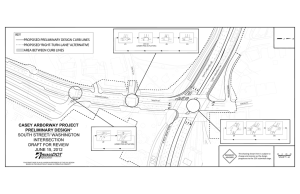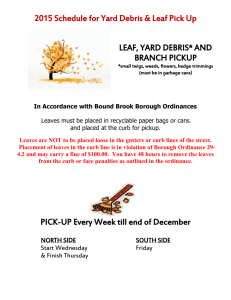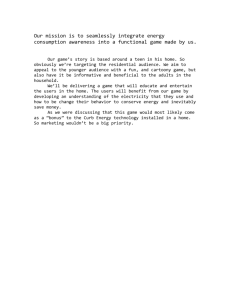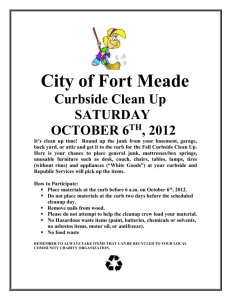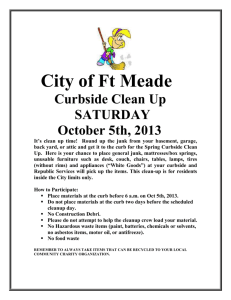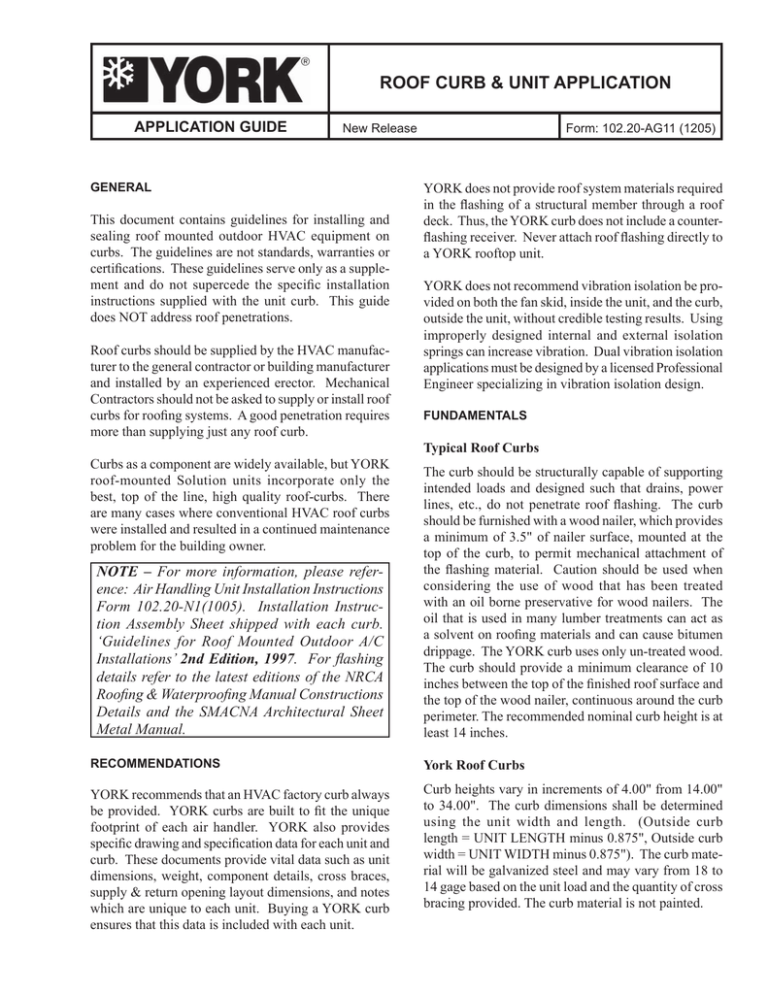
ROOF CURB & UNIT APPLICATION
APPLICATION GUIDE
New Release
GENERAL
This document contains guidelines for installing and
sealing roof mounted outdoor HVAC equipment on
curbs. The guidelines are not standards, warranties or
certifications. These guidelines serve only as a supplement and do not supercede the specific installation
instructions supplied with the unit curb. This guide
does NOT address roof penetrations.
Roof curbs should be supplied by the HVAC manufacturer to the general contractor or building manufacturer
and installed by an experienced erector. Mechanical
Contractors should not be asked to supply or install roof
curbs for roofing systems. A good penetration requires
more than supplying just any roof curb.
Form: 102.20-AG11 (1205)
YORK does not provide roof system materials required
in the flashing of a structural member through a roof
deck. Thus, the YORK curb does not include a counterflashing receiver. Never attach roof flashing directly to
a YORK rooftop unit.
YORK does not recommend vibration isolation be provided on both the fan skid, inside the unit, and the curb,
outside the unit, without credible testing results. Using
improperly designed internal and external isolation
springs can increase vibration. Dual vibration isolation
applications must be designed by a licensed Professional
Engineer specializing in vibration isolation design.
FUNDAMENTALS
Typical Roof Curbs
Curbs as a component are widely available, but YORK
roof-mounted Solution units incorporate only the
best, top of the line, high quality roof-curbs. There
are many cases where conventional HVAC roof curbs
were installed and resulted in a continued maintenance
problem for the building owner.
NOTE – For more information, please reference: Air Handling Unit Installation Instructions
Form 102.20-N1(1005). Installation Instruction Assembly Sheet shipped with each curb.
‘Guidelines for Roof Mounted Outdoor A/C
Installations’ 2nd Edition, 1997. For flashing
details refer to the latest editions of the NRCA
Roofing & Waterproofing Manual Constructions
Details and the SMACNA Architectural Sheet
Metal Manual.
The curb should be structurally capable of supporting
intended loads and designed such that drains, power
lines, etc., do not penetrate roof flashing. The curb
should be furnished with a wood nailer, which provides
a minimum of 3.5" of nailer surface, mounted at the
top of the curb, to permit mechanical attachment of
the flashing material. Caution should be used when
considering the use of wood that has been treated
with an oil borne preservative for wood nailers. The
oil that is used in many lumber treatments can act as
a solvent on roofing materials and can cause bitumen
drippage. The YORK curb uses only un-treated wood.
The curb should provide a minimum clearance of 10
inches between the top of the finished roof surface and
the top of the wood nailer, continuous around the curb
perimeter. The recommended nominal curb height is at
least 14 inches.
RECOMMENDATIONS
York Roof Curbs
YORK recommends that an HVAC factory curb always
be provided. YORK curbs are built to fit the unique
footprint of each air handler. YORK also provides
specific drawing and specification data for each unit and
curb. These documents provide vital data such as unit
dimensions, weight, component details, cross braces,
supply & return opening layout dimensions, and notes
which are unique to each unit. Buying a YORK curb
ensures that this data is included with each unit.
Curb heights vary in increments of 4.00" from 14.00"
to 34.00". The curb dimensions shall be determined
using the unit width and length. (Outside curb
length = UNIT LENGTH minus 0.875", Outside curb
width = UNIT WIDTH minus 0.875"). The curb material will be galvanized steel and may vary from 18 to
14 gage based on the unit load and the quantity of cross
bracing provided. The curb material is not painted.
FORM: 102.20-AG11 (1205)
SEE FIGURES
2&3
STRUCTURAL
FRAME
A
HEIGHT SEE
TABLE 1
ALTERNATE MOUNTINGS
PIPE COLUMN
Alternative Stand Mounting consisting of custom structural steel wide flange I-beam frames may be designed
to accommodate every variety of mounted heating,
ventilating and air conditioning equipment. The custom
I-beams should be formed to be an integral part of the
AHU Structural Base Rail Support. The AHU must
be supported in both length and width to ensure unit
integrity. The AHU cannot be mounted in a cantilevered
position. See Table 1 for “Working Clearances”. See
Figures 1 thru 4 for typical methods of unit supports.
Some mechanical equipment installations require that
roofing materials be installed or maintained beneath
them. Table 1 presents guidelines for the clearances
necessary to accomplish this purpose. Units which
allow access from the sides may permit reduction of
these values.
013-005
FIGURE 1 – MECHANICAL EQUIPMENT STAND
(BY OTHERS)
STRUCTURAL
FRAME
1/4" MINIMUM
CLEARANCE
TO UMBRELLA.
Height Above
Roof Surfaces
Up to 24"
14"
25" to 36"
18"
37" to 48"
24"
49" to 60"
30"
61" And Wider
48"
CAULK WITH
SEALANT
DRAWBAND
1/4" MINIMUM
CLEARANCE
TO PIPE.
PLATE FASENED TO
DECK AS REQUIRED
WATERTIGHT UMBRELLA
OVERLAPPING JACK BY
MINIMUM OF 4".
SHEET METAL ROOF JACK
MINIMUM OF 8" ABOVE
ROOFING.
3" MINIMUM TO
4" MAXIMUM FLAGE
SET IN MASTIC OVER
ROOFING. PRIME
FLANGES BEFORE
STRIPPING.
TABLE 1 – WORKING CLEARANCES
Width of Equipment
W
TA IDTH
BL
E 1 SEE
YORK furnishes a wood nailer and gasketing with each
curb, but insulation is an option. Although insulated
curbs are often specified, the roofing contractor is ultimately responsible to provide roof insulation. It is rare
(less than 1% of instances) for a curb manufacturer to
provide a flange-turned-out curb that is insulated at the
factory. Curbs manufactured for YORK Solution units
are flange-turned-out style curbs and therefore do not
include factory insulation as a standard.
013-005
FIGURE 2 – CONCRETE DECK AND FRAME
STRUCTURAL FRAME
CAULK WITH
SEALANT.
Typical methods for flashing of unit supports are shown
in Figures 1, 2 and 3.
1/4" MINIMUM
CLEARANCE
TO UMBRELLA.
DRAWBAND
WATERTIGHT UMBRALLA
OVERLAPPING JACK
BY MINIMUM OF 4".
SHEET METAL ROOF
JACK MINIMUM OF
8" ABOVE ROOFING.
1/4" MINIMUM
CLEARANCE
TO PIPE.
FASTENED TO
STRUCTRUAL
FRAMING AS
REQUIRED.
3" MINIMUM TO
4" MAXIMUM FLANGE
SET IN MASTIC OVER
ROOFING. FASTEN
FLANGE TO WOOD
NAILER (ALL SIDES)
PRIME FLANGE BEFORE
STRIPPING.
013-005
FIGURE 3 – INSULATED STEEL DECK FRAME
2
YORK INTERNATIONAL
FORM: 102.20-AG11 (1205)
UNIT END
CURB
2" BOTTOM
FLOOR PANEL
RH UNIT SIDE
BASE RAIL
RH UNIT
SIDE CURB
DETAIL "B"
UNIT END
DUNNAGE
STEEL
DETAIL "A"
UNIT SIDE
DUNNAGE
STEEL
LH UNIT
SIDE BASE
RAIL
B
A
LH UNIT
SIDE CURB
UNIT SIDE
DUNNAGE
STEEL
DETAIL A
(WIDTH OF UNIT)
A = UNIT WIDTH - 2.736
B = UNIT LENGTH - 2.736
DETAIL B
(LENGTH OF UNIT)
B
A
013-009
FIGURE 4 – DUNNAGE STEEL DETAILS
BASE RAILS
YORK factory installs base rails on each unit that
requires one. Larger base rails (6", 8", or 10") are
optional on each unit. YORK base rails are not insulated. The base rail extends slightly beyond the curb
edge and has a slight turn downward over the curb
to create a snug perimeter fitting. Since the base rail
is a unit option, when ordered, base rails are shown on
unit drawings.
CURB REST
The ‘Curb Rest’ is a 14ga. galvanized steel strip attached
to the raceway or base rail, which serves to direct, guide
or indicate alignment when setting a unit onto the curb.
The ‘Curb Rest’ is not to be considered a flashing receiver for the curb. The hole pattern along the length
of the curb rest is intended for securing the curb rest to
the shipping material used during unit shipment. Once
the shipping material is removed and the unit is placed
on the curb, the holes may be used for securing the curb
rest to the curb. See figure 5.
YORK INTERNATIONAL
WALL PANEL
STANDARD
RACEWAY
GASKET, NEOPRENE
0.25" THK x 1.25"
CURB REST
0.438 TYP.
1X4 NAILER
1.500 TYP.
ROOF CURB
4.084 TYP.
FIGURE 5 – CURB REST
3
FORM: 102.20-AG11 (1205)
CURB PREPARATION
TYPICAL CURB STYLES
The YORK Air Handling roof top unit may be factory
assembled and shipped in one piece or in a number of
sub-assemblies. The contractor should identify each
assembly prior to installing the unit. The contractor
should follow the installation instructions for assembling and installing units on curbs. Some unit features
may extend beyond cabinet dimensions; coil connections, door handles, mounting feet, etc.
The following are typical curb styles used with YORK
SOLUTION roof mounted outdoor units:
Unit & Curb Orientation is critical. The AIR FLOW
insignia is shown on curb and unit detail drawings. As
a point for reference, the YORK Solution unit has a
front, rear, left, right, and top and bottom sides. (See
figure 6).
Flat Curbs – See Figure 7
• Curb heights vary in increments of 4.00" from
14.00" to 34.00".
• The curb material is galvanized steel and may
vary from 18 to 14 gage based on the unit load
and the quantity of cross bracing provided.
• CL (Outside curb length) = Unit length minus
0.875"
• CW (Outside curb width) = Unit width minus
0.875"
Height
Width
RIGHT
Sloped curbs – See Figure 8
FRONT
(inlet)
Airflow
LEFT
TOP
REAR
(outlet)
•
•
•
•
Long side the maximum Slope = 0.50" in 12.00".
Short side the maximum Slope = 1.00" in 12.00".
Curb Height is the height of curb at shorter wall.
Curb heights vary in increments of 4.00" from
14.00" to 34.00".
• Maximum height of tallest wall will be 42.00".
BOTTOM
Vibration Isolated Curbs – See Figure 12
Length
FIGURE 6 – UNIT & CURB ORIENTATION
Roof Curb MUST BE SQUARE & LEVEL prior to
setting equipment. A minimum of one cross brace will
be provided with each curb. The maximum spacing
between cross braces is 90". Cross braces must not
interfere with unit bottom openings or with the pipe
chase curb. Braces of the proper quantity, location and
material gage to support the unit load will be furnished
with the curb.
Prior to setting the unit onto the curb, the installer should
ensure that a sealing material is positioned between the
unit and the curb to provide a watertight connection.
The rooftop unit may be mounted immediately after
the curb is installed. Roofing may be completed after
setting the unit.
4
Vibration Isolated curbs is available on a special quoted
basis:
• Flat or sloped
• Curb heights vary in increments of 4.00" from
14.00" to 34.00".
• Curb includes vibration isolation between equipment and roof.
Seismic Curbs – See Figure 12
Seismic curbs are available on a special quoted basis:
• Flat or sloped.
• Curb must be capable of supporting seismic loads
of two options.
• Up to 0.75gs
• Up to 2.06gs
• Curb heights vary in increments of 4.00" from
14.00" to 34.00".
YORK INTERNATIONAL
FORM: 102.20-AG11 (1205)
LEFT HAND UNIT SHOWN.
CURB SUPPORTS
AS REQUIRED.
D
RIGHT HAND
PIPE CHASE
A
UNIT WALL
B
C
UNIT
RACEWAY
14"
1-1/2"
1-7/8"
"A"
1-7/8"
CURB REST
CURB FOR PIPE
CHASE
ENCLOSURE
CASING
LEFT HAND
PIPE CHASE
NEOPRENE GASKET
0.25" THK X 1.25" W
2"
"A"
14"
2" X 4"
NAILER
013-007
UNIT ROOF
CURB
PIPE CHASE SECTION VIEW
SECTION "A-A"
2"
CURB CALCULATION FOR OUTSIDE DIMENSIONS:
A = Total unit length from Yorkworks minus 0.875".
B = Pipe chase location distance from unit inlet end pipe chase mtg
holds will not be included on the curb pipe chase mtg will be
field located.
C = Pipe chase length minus 0.875.
D = Total unit width from Yorkworks minus 0.875"
NOTES:
4. Curb heights vary in increments of 4" form 14" to 34".
1. Curb, Curb rest, Nailer, and gasket only, furnished by YORK. All
other parts furnished "by others".
5. Curb material will be galvanized steel, unpainted, and may vary
from 18 to 14 gage based on the unit load and the quantity of cross
bracing.
2. Roof curb shipped in pieces for field assembly.
3. Roof curb must be installed square and level.
6. Curbs must be fully supported by the roof structure.
FIGURE 7 – TYPICAL FLAT ROOF CURB
LENGTH-WISE SLOPE
OUTSIDE
AIR
OUTSIDE
AIR
SUPPLY
AIR
RETURN
AIR
42"
MAX
ROOFTOP
PIPE
CHASE
RETURN
AIR IN
14"
MIN
SUPPLY
AIR
ROOFTOP
RETURN > SUPPLY
SUPPLY > RETURN
42"
MAX
42"
RETURN
AIR
14"
MIN
WIDTH-WISE SLOPE
ROOFTOP
14"
MIN
PIPE
CHASE
*14"
RETURN
AIR IN
42"
MAX
ROOFTOP
RIGHT > LEFT
LEFT > RIGHT
* CURB HEIGHT SELECTED IS ALWAYS THE SHORTEST DIMENSION.
013-003
FIGURE 8 – SLOPED CURB
YORK INTERNATIONAL
5
FORM: 102.20-AG11 (1205)
CURB APPLICATION
tion properly to prevent air and water leakage into
the curb.
The top of the curb should be level after installation. A
separate counter-flashing receiver should be installed
prior to the installation of the equipment. All receivers should be of watertight construction. For details
concerning counter-flashing receivers refer to the latest
edition of The SMACNA Architectural Sheet Metal
Manual.
STRUCTURAL CROSS SUPPORTS
Roof damage may occur when there are no cross supports at the front and rear curb flange. Without full
perimeter structural support roof deflection and related
damage will occur.
If the installing contractor makes penetrations through
the unit floor, care must be taken to seal the penetra-
FAN
FILTERS
COIL
FLEX MATERIAL
INLET OPENING
RACEWAY
CURB REST
FIELD HOOK-UP
DUCT WORK
FLOOR
14"-34" ON
4" INCREMENTS
CURB
INSIDE CURB LENGTH DIMENSION EQUALS
YORKWORKS SUBMITTAL DRAWING LENGTH
MINUS 9".
(DO NOT USE THE YORKWORKS CURB DRAWING
2X4
NAILER
UNIT LENGTH
FROM THE YORKWORKS SUBMITTAL DRAWING.
WALL PANEL
WALL PANEL
STANDARD
RACEWAY
STANDARD
RACEWAY
FLOOR PANEL
FAN DOWN DISCHARGE
FLOOR PANEL
OPTIONAL
BASERAIL
NEOPRENE
GASKET
FLEX MATERIAL
FLOOR
RACEWAY
NOTE 2
2" SIDE
WALL
PANEL
2" X 4"
NAILER
CURB REST
UNIT WIDTH
FROM YORKWORKS
SUBMITTAL DRAWING
(NOT THE CURB DRAWING)
NOTE 1
ROOF
CURB
CURB
REST
2" X 4"
NAILER
NEOPRENE
GASKET
NOTE 1
CURB
ROOF
CURB
013-010
NOTES:
1. Curbs available 14" thru 34" in 4" increments.
2. Outdoor base rails are available in 3", 6", 8", & 10" heights.
3. Seal all joints and seams with suitable sealer such as sikaflex
- 221 (YORK p/n 013-02966-000) or manus bond 75-AM100ZTU
(YORK p/n 013-02966-001).
FIGURE 9 – CURB DETAIL
6
YORK INTERNATIONAL
FORM: 102.20-AG11 (1205)
CURB DRAWINGS
Compare the curb layout drawing to the submittal
documents for the air handler to confirm that the details
match. Each air handler has a dedicated drawing that
corresponds with the features that are included in the
unit. If a pipe chase has been included with the unit, the
curb shall include a curb extension for the pipe chase.
The pipe chase mounting will need to be field located
and drilled. The pipe chase curb will be notched at the
top flange so that it can be mounted along the length of
the unit. See Figure 11.
SECTIONAL VIEWS
ROOFING
FELT
2" X4"
NAILER
ROOFING
FELT
2" X4"
NAILER
ROOFING
FELT
2" X4"
NAILER
CURB
INSULATION
BY OTHERS
ROOF
CURB
ROOF
CURB
CANT
STRIP
ROOF
INSULATION
ROOF
INSULATION
CANT
STRIP
ROOF
DECKING
ROOF
DECKING
ROOF
CURB
ROOF
INSULATION
3/16" THICK
BEARING
PLATE
ROOF
DECKING
ROOF
STRUCTURE
ROOF
STRUCTURE
ROOF
STRUCTURE
HARDWOOD OR STEEL
SHIMS BETWEEN ROOF
DECKING AND SUPPORT
STRUCTURE.
TYPE "B"
TYPE "A"
CANT
STRIP
TYPE "C"
013-006
FIGURE 10 – SUGGESTED CURB INSTALLATION METHODS
WALL PANEL WITH
COIL OUTLETS
UNIT WALL
PIPE CHASE CURB
DIMENSIONS
PIPE CHASE
PANEL ASSEMBLY
PIPE CHASE
TOP PANEL
ACCESS
DOOR
14.000
PIPE CHASE
ACCESS DOOR
14.320
PIPE CHASE
CURB ASSY
UNIT CURB WITH
WOODEN NAILER
2
013-008
FIGURE 11 – PIPE CHASE DETAIL
YORK INTERNATIONAL
7
FREQUENTLY ASKED QUESTIONS
What are seismic isolation curbs?
What are spring isolation curbs?
They are roof curbs that incorporate adjustable spring
isolators into the curb as a single component. Most isolation curbs are designed for 1" static deflection springs.
The springs are mechanically fastened and sized within
the frame to ensure uniform deflection for the entire
system. The vibration elimination portion of the curb is
constructed of structural steel and should be designed to
match the bottom of the rooftop unit. Usual operating
height is 21" with options for different heights.
When would I need a curb with spring isolation?
The seismic isolation curb incorporates a fully adjustable support system specifically designed for unit
vibration and seismic/wind restraint. Most seismic
zones require a seismic isolation rail as part of the roof
curb. [Reference: American Society of Civil Engineers
(ASCE 7-02 section 9) & International Building Code
2003( IBC – 2003 section 1621)]
Seismic isolation curbs are designed to meet superimposed live and dead loads, including equipment and
other construction loads, to be supported on the curb.
The curb contains mountings designed and rated to resist
seismic forces in all directions. A typical example is
shown in Figure 12 below.
Whenever the roof may be subjected to harmful vibrations from roof mounted equipment. Rotating mechanical equipment systems are capable of producing natural
frequencies or vibrations that annoy the occupants of
a building, disturb sensitive equipment and can cause
structural fatigue. If ignored, harmful frequencies/
vibrations can lead to potentially hazardous situations.
Spring isolation curbs help to eliminate vibration and
structural fatigue problems.
What is structural fatigue?
Fatigue is damage caused by repeated cycling of a specific load. Load cycling causes progressive localized
damage to many materials. Most fatigue cracks initiate and propagate in regions where the strain is most
severe. The process of fatigue consists of three stages;
initial crack initiation, progressive crack growth across
the material and final sudden fracture of the remaining
cross section.
FIGURE 12 – ROOF CURB WITH SEISMIC / WIND
RESTRAINT.
What is Fatigue Analysis?
The roofing contractor usually provides insulation in
the roof curb.
A fatigue analysis is a study of the structural parts of a
building and the effects that vibration-producing equipment have on the building, other components, and the
equipment itself. Engineering firms that specialize in
the fields of vibration, noise and acoustics should be
consulted. An analysis would indicate if a curb with
spring isolation and isolation rail is needed.
P.O. Box 1592, York, Pennsylvania USA 17405-1592
Copyright © by York International Corporation 2001
Form 102.20-AG11 (1205)
Supersedes: Nothing
Who installs the insulation required to prevent
curb condensation?
REFERENCES:
Guidelines for Roof Mounted Air-Conditioner Installations” (2nd Edition, 1997)
Prepared by: Air-Conditioning and Refrigeration
Institute, National Roofing Contractors’ Association,
Sheet Metal and Air-Conditioning Contractors National
Association; 1997.
Tele. 800-861-1001
www.york.com
Subject to change without notice. Printed in USA
ALL RIGHTS RESERVED

